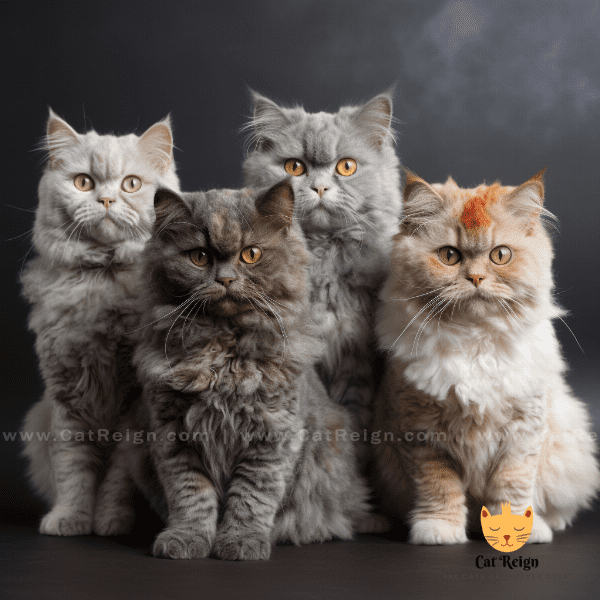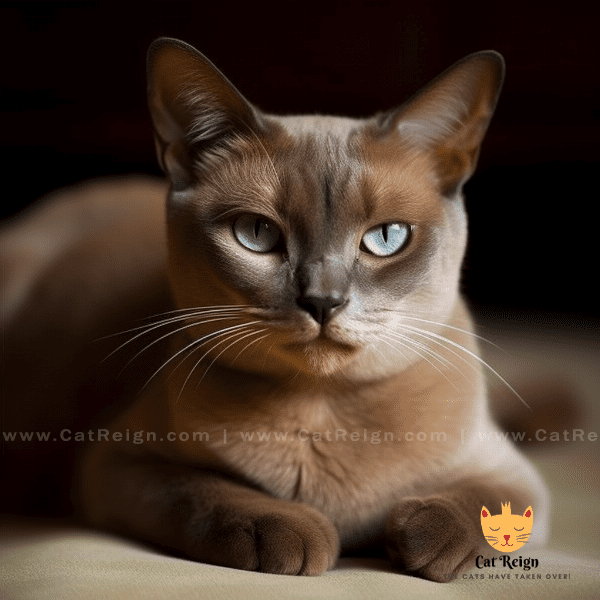Table of Contents
- “Origin and History of the British Shorthair Cat”
- “Physical Characteristics of British Shorthair Cats”
- “Personality Traits of British Shorthair Cats”
- “Grooming Needs of British Shorthair Cats”
- “Health Issues Common in British Shorthair Cats”
- “Training Tips for British Shorthair Cats”
- “Feeding Requirements for British Shorthair Cats”
- “Living with a British Shorthair Cat: Pros and Cons”
- “Interacting with British Shorthair Cats”
- “Finding a British Shorthair Cat: Breeders and Adoption Options”
Origin and History of the British Shorthair Cat
The British Shorthair cat is a well-known breed that has been around for centuries. It is believed that this breed originated in Britain, where it was first used as a working cat to help keep the rat population under control. Over time, these cats became popular among the British people, and they eventually became household pets.
Ancestry
The exact ancestry of the British Shorthair cat is unknown, but it is believed that it is related to the cats that were brought to Britain by the Romans. These cats were known for their short, dense coats and robust bodies, which are traits that are still present in the British Shorthair cat today.
Breed Development
In the early 1900s, the British Shorthair cat began to be selectively bred to achieve certain traits, such as a rounder head and a thicker coat. The breed was also crossed with other breeds, such as the Siamese cat, to create new varieties.
Recognition
The British Shorthair cat was officially recognized as a breed in the United Kingdom in the 1900s, and it was later recognized in the United States in the 1960s. Today, the British Shorthair cat is one of the most popular Cat breeds in the world, and it is recognized by all major cat breed organizations.
.

Physical Characteristics of British Shorthair Cats
Body Type
The British Shorthair cat has a round, cobby body with a short, straight tail. Its legs are short and strong, and its paws are large and rounded. These cats are not particularly agile, but they are very sturdy and can handle themselves well.
Coat
The coat of the British Shorthair cat is short and dense, with a plush texture. It is not prone to matting or tangles, which makes grooming relatively easy. These cats come in a variety of colors and patterns, including blue, black, silver, and cream.
Head and Face
The British Shorthair cat has a round, broad head with chubby cheeks and a short, broad nose. Its ears are small and round, and its eyes are large and round, giving it an expressive, almost cartoon-like appearance.
Size and Weight
The British Shorthair cat is a medium-sized breed that typically weighs between 8 and 15 pounds. Females are generally smaller than males.
.
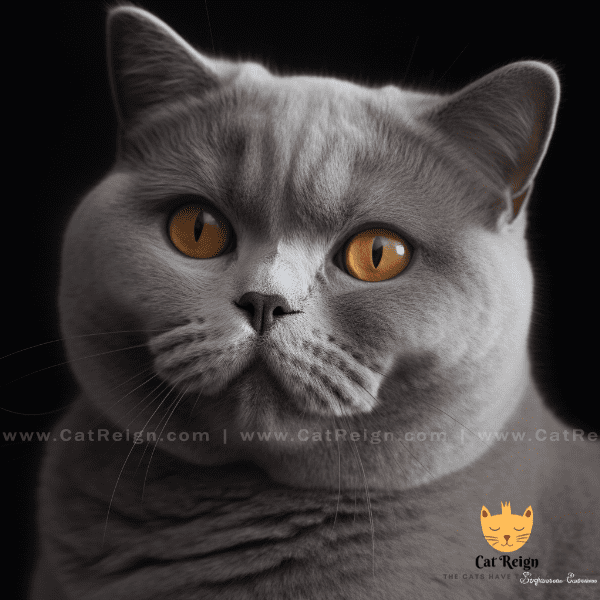
Personality Traits of British Shorthair Cats
The British Shorthair cat is known for its calm and affectionate personality. Here are some of the key personality traits that make the British Shorthair cat such a beloved breed.
Temperament
The British Shorthair cat is a laid-back and easy-going breed. These cats are not particularly active or playful, but they do enjoy spending time with their owners and are happy to cuddle up on the couch for a nap. They are also very social cats and do well in homes with other pets or children.
Intelligence
While the British Shorthair cat may not be the most intelligent breed, they are very good at problem-solving and can figure out how to get what they want. They are also very trainable and can learn a variety of tricks and behaviors with the right motivation and training.
Vocalization
The British Shorthair cat is not a particularly vocal breed. While they will occasionally meow to get their owner’s attention or express their needs, they are generally quiet and content to simply be in the presence of their owners.
.
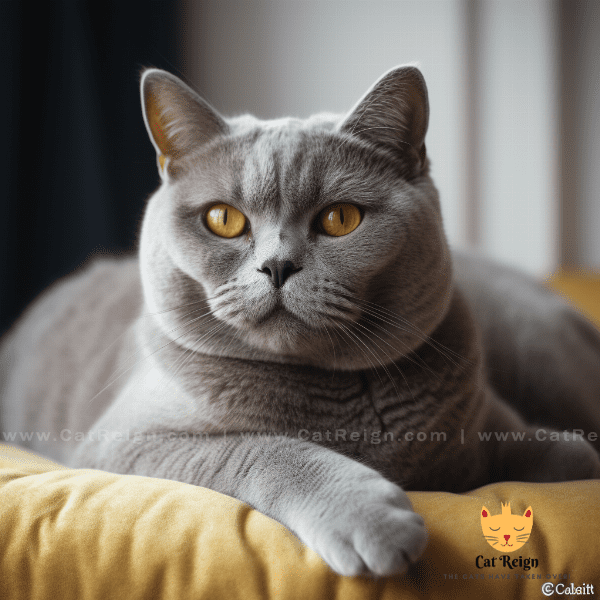
Grooming Needs of British Shorthair Cats
The British Shorthair cat has a thick, dense coat that requires regular grooming to keep it looking its best. Here are some of the key grooming needs of the British Shorthair cat.
Brushing
The British Shorthair cat should be brushed at least once a week to remove loose hair and prevent matting. A slicker brush or a metal comb is ideal for this breed, as it will help to remove tangles without damaging the coat.
Bathing
The British Shorthair cat does not need to be bathed very often, as their coat is naturally resistant to dirt and oil. However, if your cat gets into something particularly messy or starts to develop an odor, a bath may be necessary. Use a mild cat shampoo and warm water, and be sure to rinse thoroughly to remove all soap residue.
Nail Trimming
The nails of the British Shorthair cat should be trimmed regularly to prevent them from becoming too long or sharp. Use a sharp pair of cat nail clippers and be sure to avoid cutting the quick, which is the pink part of the nail that contains blood vessels.
Teeth Cleaning
The British Shorthair cat is prone to dental problems, so regular teeth cleaning is essential to maintain their oral health. Use a soft-bristled toothbrush and a toothpaste made specifically for cats, and be sure to brush their teeth at least once a week.
.
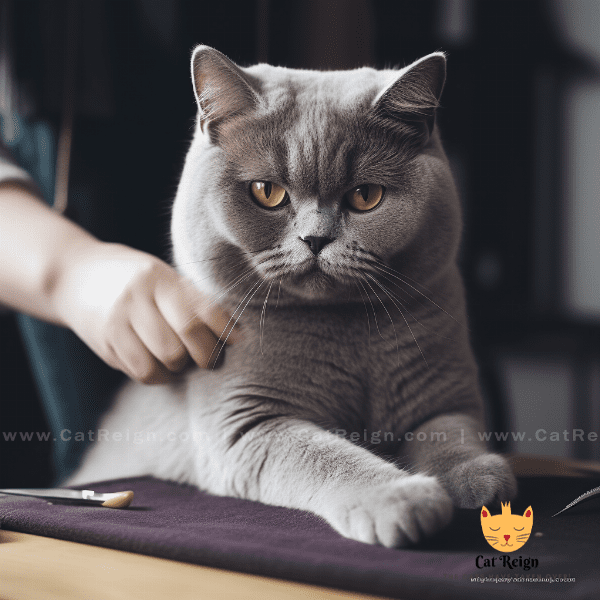
Health Issues Common in British Shorthair Cats
Like all breeds of cats, the British Shorthair cat is susceptible to certain health problems. Here are some of the most common health issues that affect this breed.
Hypertrophic Cardiomyopathy
Hypertrophic Cardiomyopathy (HCM) is a heart condition that is common in many breeds of cats, including the British Shorthair. This condition causes the walls of the heart to thicken, which can lead to heart failure if left untreated. Regular veterinary checkups and heart screenings can help to detect this condition early on.
.
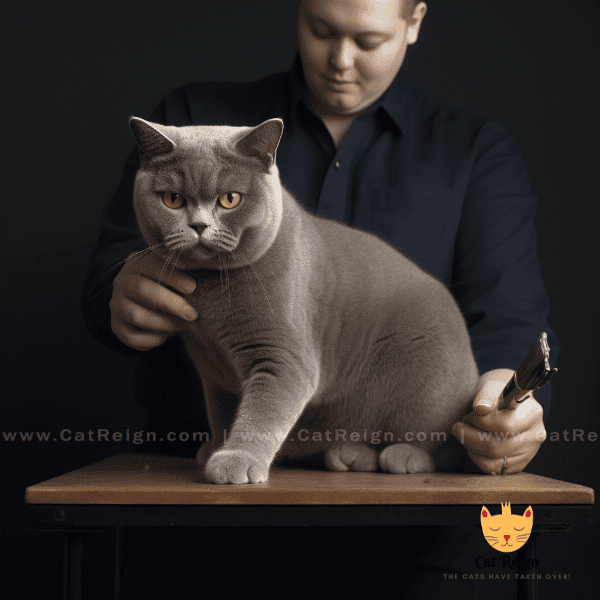
Training Tips for British Shorthair Cats
The British Shorthair cat is an intelligent and trainable breed, and with the right motivation and techniques, they can learn a variety of tricks and behaviors. Here are some training tips that can help you to teach your British Shorthair cat new skills and behaviors.
Positive Reinforcement
Positive reinforcement is one of the most effective training techniques for the British Shorthair cat. This involves rewarding your cat for good behavior with treats, toys, or praise. By consistently rewarding good behavior, you can encourage your cat to repeat those behaviors in the future.
Clicker Training
Clicker training is a popular training technique that involves using a clicker to signal to your cat that they have performed a desired behavior. You can then reward them with a treat or praise. This technique can be very effective for teaching your cat new tricks or behaviors.
Litter Box Training
Litter box training is an important part of owning a British Shorthair cat. To train your cat to use the litter box, place them in the box after they have eaten or woken up from a nap. Reward them with praise or a treat when they use the box correctly.
.
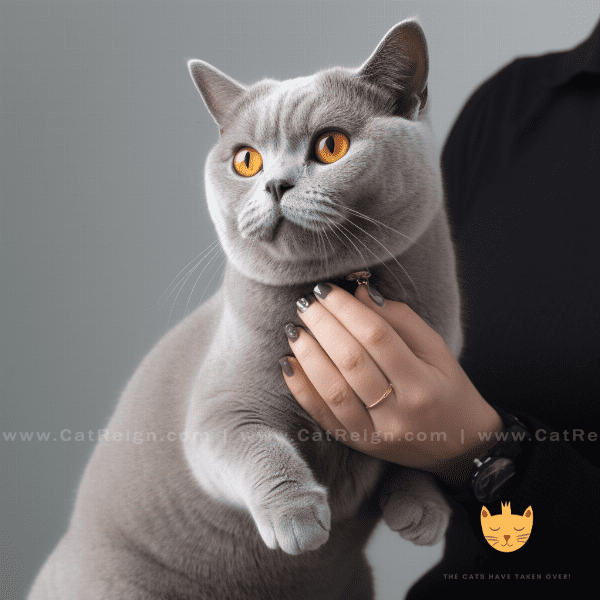
Feeding Requirements for British Shorthair Cats
The British Shorthair cat has specific dietary needs that are important to consider when feeding them. Here are some feeding requirements that can help you to keep your British Shorthair cat healthy and happy.
High-Quality Food
The British Shorthair cat requires a high-quality, protein-rich diet to maintain their health and wellbeing. Look for cat foods that list meat as the first ingredient and avoid foods that contain fillers or artificial ingredients.
Portion Control
The British Shorthair cat is prone to obesity, so it is important to monitor their food intake and provide them with the appropriate portion sizes. Follow the feeding instructions on the cat food packaging and be sure to adjust the portion sizes as needed based on your cat’s weight and activity level.
Water Intake
The British Shorthair cat should have access to clean, fresh water at all times. Provide your cat with a clean water bowl and be sure to change the water regularly to ensure that it is free of contaminants.
Treats
Treats can be a great way to reward your British Shorthair cat for good behavior or to provide them with a special snack. However, it is important to limit the number of treats that you give your cat to avoid overfeeding and weight gain.
.
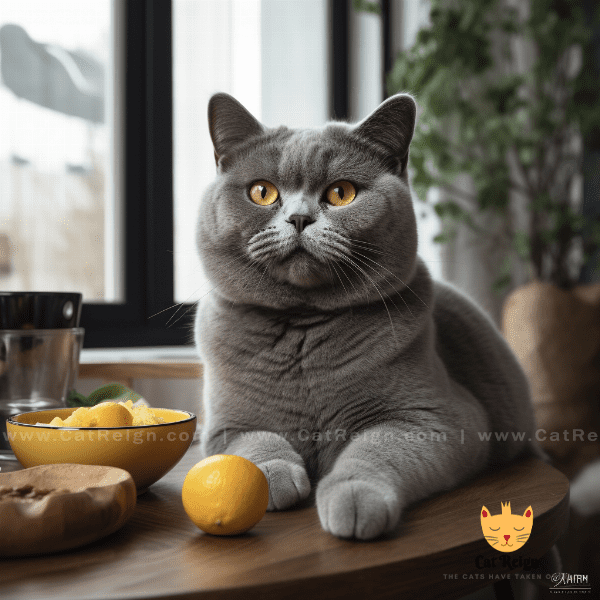
Living with a British Shorthair Cat: Pros and Cons
The British Shorthair cat is a beloved breed that is known for its calm and affectionate personality. However, like all breeds of cats, there are pros and cons to living with a British Shorthair cat. Here are some of the key things to consider when deciding whether a British Shorthair cat is right for you.
Affectionate
The British Shorthair cat is a very affectionate breed that enjoys spending time with its owners. They are happy to cuddle up on the couch for a nap or to sit in your lap while you read a book.
Low-Maintenance
The British Shorthair cat is a relatively low-maintenance breed that does not require a lot of grooming or exercise. They are content to simply be in the presence of their owners and do not require a lot of attention.
Good with Children and Other Pets
The British Shorthair cat is a very social breed that does well with children and other pets. They are not particularly aggressive and are happy to coexist peacefully with other animals.
Prone to Obesity
The British Shorthair cat is prone to obesity, which can lead to a variety of health problems. It is important to monitor their food intake and provide them with regular exercise to help prevent weight gain.
Expensive
The British Shorthair cat is a relatively expensive breed to purchase, and they may also require expensive veterinary care throughout their lifetime.
Independent
While the British Shorthair cat is an affectionate breed, they can also be quite independent and may not always seek out attention from their owners.
.
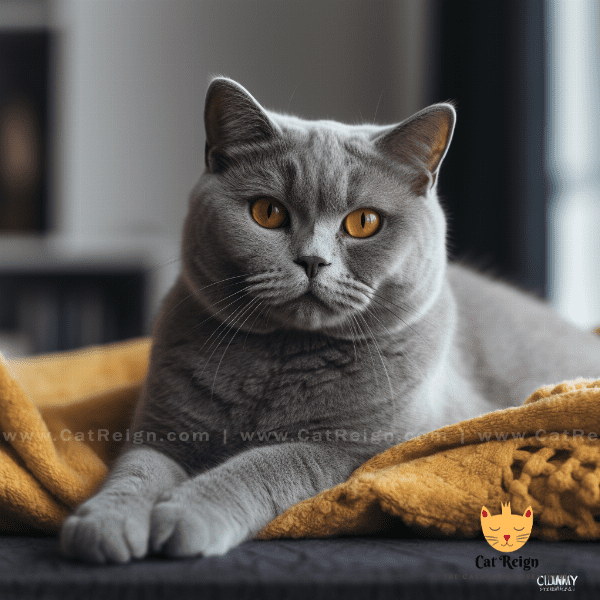
Interacting with British Shorthair Cats
The British Shorthair cat is a friendly and social breed that enjoys interacting with its owners. Here are some tips for how to best interact with your British Shorthair cat.
Give Them Space
While the British Shorthair cat is a friendly breed, they also value their personal space. It is important to give your cat the space they need to feel comfortable and secure in their environment.
Playtime
The British Shorthair cat enjoys playtime, and incorporating toys into their routine can help to keep them mentally and physically stimulated. Toys that encourage hunting behaviors, such as toy mice and feathers, can be particularly engaging for this breed.
Affection
The British Shorthair cat is an affectionate breed that enjoys being petted and cuddled. They are particularly fond of having their chin and cheeks scratched.
Communication
The British Shorthair cat is an intelligent breed that can understand a variety of verbal and nonverbal cues. Using a calm and reassuring tone of voice, as well as nonverbal cues such as eye contact, can help to communicate with your cat effectively.
.
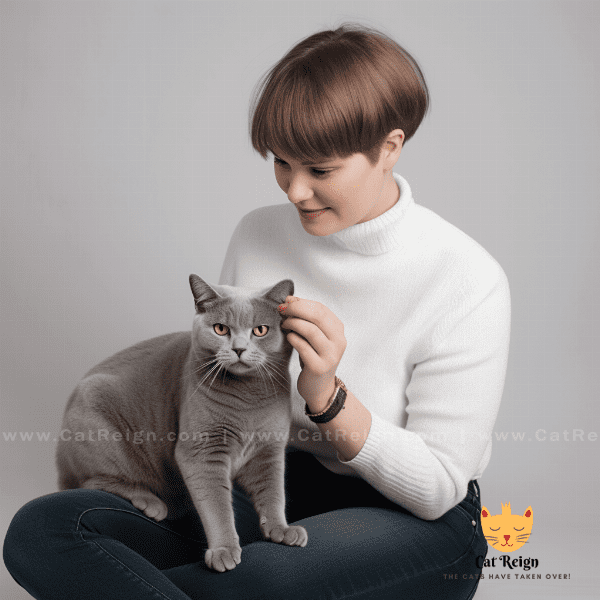
Finding a British Shorthair Cat: Breeders and Adoption Options
If you are interested in bringing a British Shorthair cat into your home, there are several options to consider. Here are some things to keep in mind when finding a British Shorthair cat.
Breeders
When looking for a British Shorthair cat breeder, it is important to do your research and find a reputable breeder that prioritizes the health and wellbeing of their cats. You can search for breeders online or through cat breeding organizations.
Adoption
Adopting a British Shorthair cat from a shelter or rescue organization can be a great option for those looking to give a cat in need a loving home. Many rescue organizations have British Shorthair cats available for adoption.
Cost
The cost of a British Shorthair cat can vary depending on the breeder or adoption organization. It is important to consider not only the initial cost of purchasing or adopting a cat, but also the ongoing expenses associated with cat ownership, such as food, veterinary care, and grooming.
About British Shorthair Cat
Whether you choose to purchase a British Shorthair cat from a breeder or adopt one from a rescue organization, it is important to find a cat that is healthy and well-suited to your lifestyle. Be sure to consider the costs associated with cat ownership, and to provide your cat with the love and care they need to thrive.
Whether you are a long-time fan of the British Shorthair cat or are simply interested in learning more about this amazing breed, there is always something new and exciting to discover about these delightful felines.


